 W
WFantasy tropes are a specific type of literary tropes that occur in fantasy fiction. Worldbuilding, plot, and characterization have many common conventions, many of them having ultimately originated in myth and folklore. J. R. R. Tolkien's legendarium for example, was inspired from a variety of different sources including Germanic, Finnish, Greek, Celtic and Slavic myths. Literary fantasy works operate using these tropes, while others use them in a revisionist manner, making the tropes over for various reasons such as for comic effect, and to create something fresh.
 W
WAccidental travel is a speculative fiction plot device which an ordinary person or a group of people accidentally find themselves outside of their normal place or time, often for no apparent reason, a particular type of the "fish-out-of-water" plot. In Russian fandom, the trope is known under the term popadantsy, plural form for popadanets, female: popadanka, a person who accidentally finds himself elsewhere/elsewhen. The Russian term bears ironical flavor, because popadantsy has become a widespread cliche in Russian pulp science fiction. Russian critic Boris Nevsky traces this plot device to at least Gulliver's Travels. In Japanese fiction, the genre of accidental transport into a parallel universe or fantasy world is known as isekai.
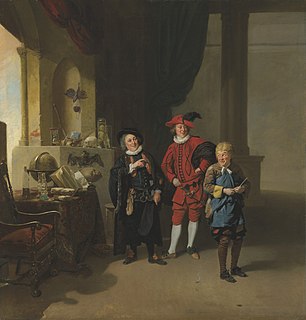 W
WAlchemy has had a long-standing relationship with art, seen both in alchemical texts and in mainstream entertainment. Literary alchemy appears throughout the history of English literature from Shakespeare to modern Fantasy authors. Here, characters or plot structure follow an alchemical magnum opus. In the fourteenth century, Chaucer began a trend of alchemical satire that can still be seen in recent fantasy works like those of Terry Pratchett.
 W
WIn the Old Norse written corpus, berserkers were those who were said to have fought in a trance-like fury, a characteristic which later gave rise to the modern English word berserk. Berserkers are attested to in numerous Old Norse sources.
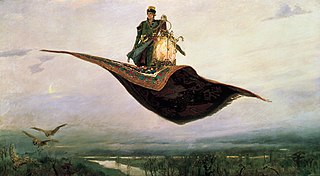 W
WA magic carpet, also called a flying carpet, is a legendary carpet and common trope in fantasy fiction. It is typically used as a form of transportation and can quickly or instantaneously carry its users to their destination.
 W
WThe caveman is a stock character representative of primitive humans in the Paleolithic. The popularization of the type dates to the early 20th century, when Neanderthals were influentially described as "simian" or "ape-like" by Marcellin Boule and Arthur Keith.
 W
WA cloak of invisibility is a fictional theme. In folklore, mythology and fairy tales, a cloak of invisibility appears either as a magical item used by duplicitous characters or an item worn by a hero to fulfill a quest. It is a common theme in Welsh and Germanic folklore, and may originate with the cap of invisibility seen in ancient Greek myths. The motif falls under "D1361.12 magic cloak of invisibility" in the Stith Thompson motif index scheme.
 W
WIn many works of modern fantasy, elves are depicted as a race or species of pointy-eared humanoid beings. These depictions arise from the álfar of Norse mythology influencing elves in fantasy as being semi-divine and of human stature, whose key traits are being friendly with nature and animals. However, this differs from Norse and the traditional elves found in Middle Ages folklore and Victorian era literature.
 W
WIn folklore and fantasy, an enchanted forest is a forest under, or containing, enchantments. Such forests are described in the oldest folklore from regions where forests are common, and occur throughout the centuries to modern works of fantasy. They represent places unknown to the characters, and situations of liminality and transformation. The forest can feature as a place of threatening danger, or one of refuge, or a chance at adventure.
 W
WIn European folklore of the medieval and early modern periods, familiars were believed to be supernatural entities that would assist witches and cunning folk in their practice of magic. According to records of the time, those alleging to have had contact with familiar spirits reported that they could manifest as numerous forms, usually as an animal, but sometimes as a human or humanoid figure, and were described as "clearly defined, three-dimensional... forms, vivid with colour and animated with movement and sound", as opposed to descriptions of ghosts with their "smoky, undefined form[s]".
 W
WIn speculative fiction, floating cities and islands are a common trope, which range from cities and islands that float on water to ones that float in the atmosphere of a planet by purported scientific technologies or by magical means. While very large floating structures have been constructed or proposed in real life, aerial cities and islands remain in the realm of fiction.
 W
WIn religion, ethics, philosophy, and psychology "good and evil" is a very common dichotomy. In cultures with Manichaean and Abrahamic religious influence, evil is usually perceived as the dualistic antagonistic opposite of good, in which good should prevail and evil should be defeated. In cultures with Buddhist spiritual influence, both good and evil are perceived as part of an antagonistic duality that itself must be overcome through achieving Śūnyatā meaning emptiness in the sense of recognition of good and evil being two opposing principles but not a reality, emptying the duality of them, and achieving a oneness.
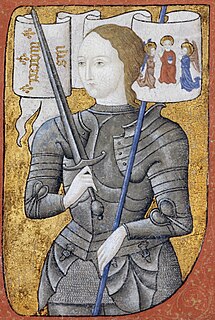 W
WA hero is a real person or a main fictional character who, in the face of danger, combats adversity through feats of ingenuity, courage, or strength. Like other formerly solely gender-specific terms, hero is often used to refer to any gender, though heroine only refers to women. The original hero type of classical epics did such things for the sake of glory and honor. Post-classical and modern heroes, on the other hand, perform great deeds or selfless acts for the common good instead of the classical goal of wealth, pride, and fame. The antonym of hero is villain. Other terms associated with the concept of hero may include good guy or white hat.
 W
WThe Horned God is one of the two primary deities found in Wicca and some related forms of Neopaganism. The term Horned God itself predates Wicca, and is an early 20th-century syncretic term for a horned or antlered anthropomorphic god partly based on historical horned deities.
 W
WLiminal beings are those that cannot easily be placed into a single category of existence. Associated with the threshold state of liminality, from Latin līmen, "threshold", they represent and highlight the semi-autonomous boundaries of the social world.
 W
WLocus amoenus is a literary topos involving an idealized place of safety or comfort. A locus amoenus is usually a beautiful, shady lawn or open woodland, or a group of idyllic islands, sometimes with connotations of Eden or Elysium.
 W
WMagic in fiction is the endowment of characters or objects in works of fiction with powers that do not naturally occur in the real world.
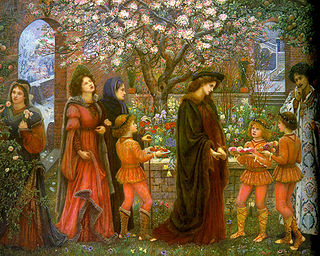 W
WA magician, also known as a enchanter/enchantress, mage, magic-user, sorcerer/sorceress, spell-caster, warlock, witch, or wizard, is someone who uses or practices magic derived from supernatural, occult, or arcane sources. Magicians are common figures in works of fantasy, such as fantasy literature and role-playing games, and enjoy a rich history in mythology, legends, fiction, and folklore.
 W
WOccult detective fiction is a subgenre of detective fiction that combines the tropes of the main genre with those of supernatural, fantasy and/or horror fiction. Unlike the traditional detective who investigates murder and other common crimes, the occult detective is employed in cases involving ghosts, demons, curses, magic, vampires, undead, monsters and other supernatural elements. Some occult detectives are portrayed as being psychic or in possession of other paranormal or magical powers.
 W
WAn orc is a fictional humanoid monster like a goblin. Orcs were brought into modern usage by the fantasy writings of J. R. R. Tolkien, especially The Lord of the Rings. In Tolkien's works, orcs are a brutish, aggressive, ugly and malevolent race of monsters, contrasting with the benevolent Elves and serving an evil power, though they share a human sense of morality; there is a suggestion, among several somewhat contradictory origin stories, that they are a corrupted race of elves.
 W
WPetrifaction, or petrification, defined as turning people to stone, is a common theme in folklore and mythology, as well as in some works of modern literature.
 W
WA potion is a liquid "that contains medicine, poison, or something that is supposed to have magic powers.” It derives from the Latin word potus which referred to a drink or drinking. The term philtre is also used, often specifically for a love potion, a potion that is supposed to create feelings of love or attraction in the one who drinks it.
 W
WPrince Charming is a fairy tale stock character who comes to the rescue of a damsel in distress and must engage in a quest to liberate her from an evil spell. This classification suits most heroes of a number of traditional folk tales, including "Snow White", "Sleeping Beauty", and "Cinderella", even if in the original story they were given another name, or no name at all.
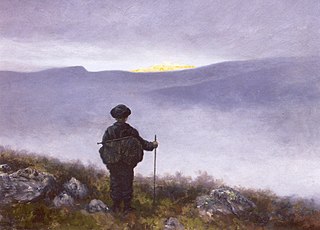 W
WA quest is a journey toward a specific mission or a goal. The word serves as a plot device in mythology and fiction: a difficult journey towards a goal, often symbolic or allegorical. Tales of quests figure prominently in the folklore of every nation and ethnic culture. In literature, the object of a quest requires great exertion on the part of the hero, who must overcome many obstacles, typically including much travel. The aspect of travel allows the storyteller to showcase exotic locations and cultures. The object of a quest may also have supernatural properties, often leading the protagonist into other worlds and dimensions. The moral of a quest tale often centers on the changed character of the hero.
 W
WA magic ring is a fictional piece of jewelry, usually a finger ring, that is purported to have supernatural properties or powers. It appears frequently in fantasy and fairy tales. Magic rings are found in the folklore of every country where rings are worn. Some magic rings can endow the wearer with a variety of abilities including invisibility and immortality. Others can grant wishes or spells such as neverending love and happiness. Sometimes, magic rings can be cursed, as in the mythical ring that was recovered by Sigurd from the hoard of the dragon Fafnir in Norse mythology or the fictional ring that features in The Lord of the Rings. More often, however, they are featured as forces for good, or as a neutral tool whose value is dependent upon the wearer.
 W
WA sentient weapon is a common plot device in many works of fantasy, mythology, and science fiction, and is related to the classic motif of the magic sword. Sentient weapons may be human, robotic, or magical, but not all magic weapons are sentient. A sentient weapon may experience a moral conflict from its specific nature as a weapon, or may function as the villain, which, through its intelligence, is able to gain power. Another possibility is that it assists the wielder, or is merely neutral.
 W
WIn mythology, folklore and speculative fiction, shapeshifting is the ability to physically transform oneself through an inherently superhuman ability, divine intervention, demonic manipulation, sorcery, spells or having inherited the ability. The idea of shapeshifting is in the oldest forms of totemism and shamanism, as well as the oldest existent literature and epic poems such as the Epic of Gilgamesh and the Iliad. The concept remains a common literary device in modern fantasy, children's literature and popular culture.
 W
WA shield-maiden was a female warrior from Scandinavian folklore and mythology.
 W
WSubterranean fiction is a subgenre of adventure fiction, science fiction, or fantasy which focuses on fictional underground settings, sometimes at the center of the Earth or otherwise deep below the surface. The genre is based on, and has in turn influenced, the Hollow Earth theory. The earliest works in the genre were Enlightenment-era philosophical or allegorical works, in which the underground setting was often largely incidental. In the late 19th century, however, more pseudoscientific or proto-science-fictional motifs gained prevalence. Common themes have included a depiction of the underground world as more primitive than the surface, either culturally, technologically or biologically, or in some combination thereof. The former cases usually see the setting used as a venue for sword-and-sorcery fiction, while the latter often features cryptids or creatures extinct on the surface, such as dinosaurs or archaic humans. A less frequent theme has the underground world much more technologically advanced than the surface one, typically either as the refugium of a lost civilization, or as a secret base for space aliens.
 W
WIn mythology, legend or fiction, a magic sword is a sword with magical powers or other supernatural qualities. Renowned swords appear in the folklore of every nation that used swords.
 W
WTelepathy is the purported vicarious transmission of information from one person to another without using any known human sensory channels or physical interaction. The term was first coined in 1882 by the classical scholar Frederic W. H. Myers, a founder of the Society for Psychical Research (SPR), and has remained more popular than the earlier expression thought-transference.
 W
WA thieves' guild is a concept in fantasy fiction consisting of a formal association of criminals who participate in theft-related organized crime. Examples appear in the Fafhrd and the Gray Mouser story "Thieves' House" by Fritz Leiber, and role-playing games such as Dungeons & Dragons. Though these more modern works are fictitious, there are real world examples as well, such as Jonathan Wild and his gang of thieves.
 W
WThe Tough Guide To Fantasyland is a nonfiction book by the British author Diana Wynne Jones that humorously examines the common tropes of a broad swathe of fantasy fiction. The U.S. Library of Congress calls it a dictionary. However, it may be called a fictional or parodic tourist guidebook. It was first published by Vista Books (London) in 1996. A revised and updated edition was completed in 2006 and published by Penguin, first in the U.S.
 W
WA villain is a stock character, whether based on a historical narrative or one of literary fiction. Random House Unabridged Dictionary defines such a character as "a cruelly malicious person who is involved in or devoted to wickedness or crime; scoundrel; or a character in a play, novel, or the like, who constitutes an important evil agency in the plot". The antonym of a villain is a hero.
 W
WA fantasy world is an author-conceived world created in fictional media, such as literature, film or games. Typical fantasy worlds involve magic or magical abilities, nonexistent technology and sometimes, either a historical or futuristic theme. Some worlds may be a parallel world connected to Earth via magical portals or items ; an imaginary universe hidden within ours ; a fictional Earth set in the remote past or future ; an alternative version of our History ; or an entirely independent world set in another part of the universe.